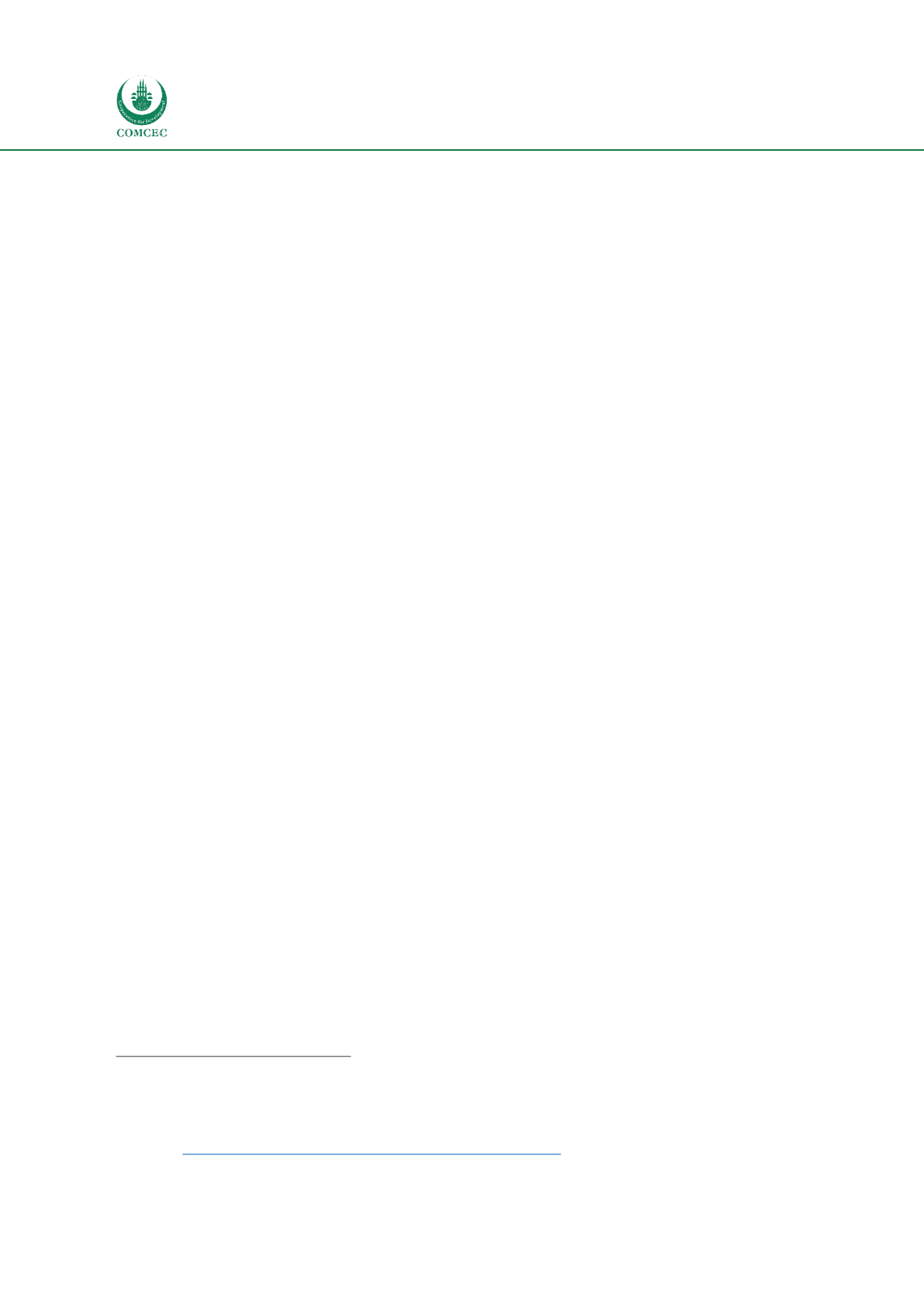

Improving Agricultural Market Performance
:
Creation and Development of Market Institutions
144
One method to quantify the effects of Government interventions is the Nominal Rate of
Assistance (NRA), which is defined as a percentage by which Government support (e.g.
subsidies and pricing policies) have raised or lowered farmers’ gross returns vis-à-vis the
scenario without Government intervention.
443
A positive NRA indicates trade protection
through input subsidies and pricing policies while a negative NRA indicates export taxes and
bans.
The NRA trend for Indonesia is mainly driven by intervention in the rice sub-sector, together
with interventions aimed at sugar and palm oil. Positive NRA rates have been recorded for
import competing agricultural commodities (e.g. rice, sugar, soybeans, and maize) while
negative NRA rates have been registered for exportable commodities (e.g. coffee, tea, rubber,
and palm oil), demonstrating these commodities were effectively taxed by Government
policies.
Looking at the effectiveness of individual market intuitions, BULOG has been the key actor
implementing the price stabilization policies, particularly for rice through determining and
enforcing maximum and minimum prices. However, BULOG’s market intervention power
declined considerably after its import and trade monopoly was removed in 1998. Studies
before removal of its monopoly power demonstrated BULOG considerably contributed to
stabilization of rice prices rather than raising these prices and directly protecting rice
producers. The exact impact is difficult to measure though the nominal protection rate (i.e.
ratio of the domestic wholesale price to the c.i.f. import parity price) rose to 36% in 1999-2000
compared to an average of 17% from 1990 to 2000.
444
In fact, it seems that the administered price for rice exceeds the de minimis standard, impeding
the effectiveness of the system as the Government of Indonesia lacks financial resources to
support domestic prices at this administered level. Hence, the Government can’t guarantee the
full administered price to farmers, thereby only partially supporting them.
445
BULOG also enjoyed monopoly power on importing and purchasing sugar for domestic
production. Sugar mills paid a fixed price to sugar farmers, which had been set by the
Government, while sugar distribution was regulated. BULOG distributed sugar to selected
wholesalers based on quotas. Marketing margins rose above competitive levels. Through the
Sugarcane Smallholder Intensification program, farmers were selected (and forced) to grow
sugar. It is estimated that sugar has been grown at the expense of one million tonnes of rice
per year, which had higher profitability rates compared to sugar.
However, as sugar prices rose slightly above world prices, sugar was grown voluntarily,
ensuring relatively cheap domestic sugar cane supplies to sugar mills, who received domestic
prices for processed sugar as a result of import restrictions and regulated distribution. The
sugar policy has been reformed several times from 1998 to 2002, however, leaving farmers
free to grow sugar, removing BULOG’s import monopoly, and removing import restrictions.
Import licenses were re-introduced in 2002, however, just as minimum prices slightly above
common market prices for sugar mills as the protection of sugar farmers and sugar mills
443
Fane, G. & Warr, P. (2007), “Distortions to Agricultural Incentives in Indonesia,”
Agricultural Distortions Research Project
Working Paper
. No. 24, pp. 2-6.
444
OECD (2010), “Policies for Agricultural Development, Poverty Reduction and Food Security,” Paper presented to the
Working Party on Agricultural Policy and Markets, 15-17 November 2010, Paris: OECD.
445
FAO (2003), “WTO Agreement on Agriculture: The Implementation Experience - Developing Country Case Studies,”
available a
t http://www.fao.org/docrep/005/y4632e/y4632e00.htm#Contents [Accessed June 2017].


















